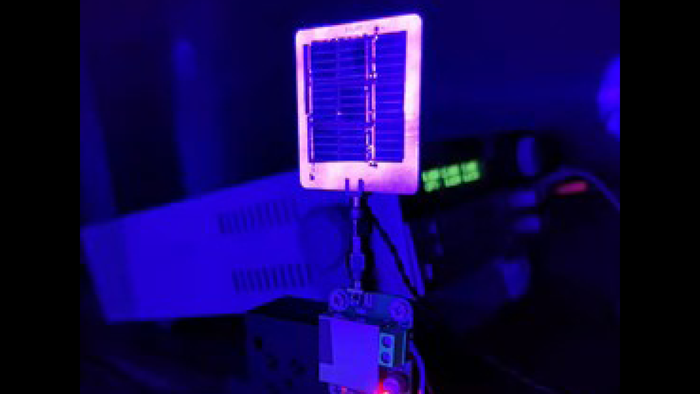Although solar cells lose much of their power yield when submerged, as the devices obviously suffer lower solar radiation, they may not be useless.
Researchers from the Zhejiang University in China used commercially available solar cells to create an underwater optimized lens-free system for high-speed optical detection and have found that the PV devices enable a much larger detection area than commonly used photodiodes. “Solar panels are being increasingly used as detectors in underwater wireless optical communication (UWOC) systems, as the large detection area can significantly simplify the link alignment,” the scientists explained. “However, the greatest problem in such a scheme is the limited bandwidth of the solar panel, which was originally optimized for energy harvesting rather than communication.”
In the proposed system, the solar cells are connected in series and are able to convert sunlight to an electrical signal. They act as detectors that can ease the transmitter-receiver alignment requirement in an underwater wireless communication system. “Until now, achieving high-speed links using off-the-shelf silicon solar cells has required complex modulation schemes and algorithms, which need intense computing resources that use extra power and create a high processing latency,” said researcher Jing Xu. “Using modeling and simulation of connected solar cells, we optimized the peripheral circuit, which significantly improved the performance of our solar cell-based detector.”
A solar array was tested in a 7-meter-long water tank emulating a 35-m underwater channel and was found to achieve a data rate of 150 megabits per second (Mbps) with a frequency domain equalizer. Mirrors were applied to extend the pathlength of the optical signal. “The system showed reliable stability, low power consumption and high performance,” the researchers stated. “As the size of the solar array increases from 1×1 to 3×3, the −20-dB bandwidth increases from 4.4 MHz to 24.2 MHz.”
The system was presented in the paper Series-connected solar array for high-speed underwater wireless optical links, published in Optica. “Because solar cells are mass produced, the proposed scheme is quite cost-effective,” concluded Xu. “Beyond the underwater world, this type of detector could also be used in visible light communication, a type of wireless communication that uses visible light from LEDs and other sources to transmit data across distances.”
The performance of underwater solar cells was investigated in 2020 by scientists from the Birla Institute of Technology and Science and the Indian Institute of Technology Kanpur and Defence Materials. According to their findings, submerged cells benefit from lower temperatures and are in an ideal environment for cleaning. “Although there are challenges and limitations, the results obtained show that there is an enormous potential for solar PV technology in underwater monitoring sensors or devices, and various other commercial and defense applications with modern-day power electronics,” the researchers stated at the time.
This content is protected by copyright and may not be reused. If you want to cooperate with us and would like to reuse some of our content, please contact: editors@pv-magazine.com.




3 comments
By submitting this form you agree to pv magazine using your data for the purposes of publishing your comment.
Your personal data will only be disclosed or otherwise transmitted to third parties for the purposes of spam filtering or if this is necessary for technical maintenance of the website. Any other transfer to third parties will not take place unless this is justified on the basis of applicable data protection regulations or if pv magazine is legally obliged to do so.
You may revoke this consent at any time with effect for the future, in which case your personal data will be deleted immediately. Otherwise, your data will be deleted if pv magazine has processed your request or the purpose of data storage is fulfilled.
Further information on data privacy can be found in our Data Protection Policy.